What Are the Different Types of Controllers, and How Do They Work?
There are three basic types of controllers: on-off, proportional and PID. Depending upon the system to be controlled, the operator will be able to use one type or another to control the process.
On/Off Control
An on-off controller is the simplest form of temperature control device. The output from the device is either on or off, with no middle state. An on-off controller will switch the output only when the temperature crosses the setpoint. For heating control, the output is on when the temperature is below the setpoint, and off above setpoint. Since the temperature crosses the setpoint to change the output state, the process temperature will be cycling continually, going from below setpoint to above, and back below. In cases where this cycling occurs rapidly, and to prevent damage to contactors and valves, an on-off differential, or "hysteresis," is added to the controller operations. This differential requires that the temperature exceed setpoint by a certain amount before the output will turn off or on again. On-off differential prevents the output from "chattering" or making fast, continual switches if the cycling above and below the setpoint occurs very rapidly. On-off control is usually used where a precise control is not necessary, in systems which cannot handle having the energy turned on and off frequently, where the mass of the system is so great that temperatures change extremely slowly, or for a temperature alarm. One special type of on-off control used for alarm is a limit controller. This controller uses a latching relay, which must be manually reset, and is used to shut down a process when a certain temperature is reached.
Proportional Control
Proportional controls are designed to eliminate the cycling associated with on-off control. A proportional controller decreases the average power supplied to the heater as the temperature approaches setpoint. This has the effect of slowing down the heater so that it will not overshoot the setpoint, but will approach the setpoint and maintain a stable temperature. This proportioning action can be accomplished by turning the output on and off for short time intervals. This "time proportioning" varies the ratio of "on" time to "off" time to control the temperature. The proportioning action occurs within a "proportional band" around the setpoint temperature. Outside this band, the controller functions as an on-off unit, with the output either fully on (below the band) or fully off (above the band). However, within the band, the output is turned on and off in the ratio of the measurement difference from the setpoint. At the setpoint (the midpoint of the proportional band), the output on:off ratio is 1:1; that is, the on-time and off-time are equal. if the temperature is further from the setpoint, the on- and off-times vary in proportion to the temperature difference. If the temperature is below setpoint, the output will be on longer; if the temperature is too high, the output will be off longer.
PID Control
The third controller type provides proportional with integral and derivative control, or PID. This controller combines proportional control with two additional adjustments, which helps the unit automatically compensate for changes in the system. These adjustments, integral and derivative, are expressed in time-based units; they are also referred to by their reciprocals, RESET and RATE, respectively. The proportional, integral and derivative terms must be individually adjusted or "tuned" to a particular system using trial and error. It provides the most accurate and stable control of the three controller types, and is best used in systems which have a relatively small mass, those which react quickly to changes in the energy added to the process. It is recommended in systems where the load changes often and the controller is expected to compensate automatically due to frequent changes in setpoint, the amount of energy available, or the mass to be controlled. OMEGA offers a number of controllers that automatically tune themselves. These are known as autotune controllers.
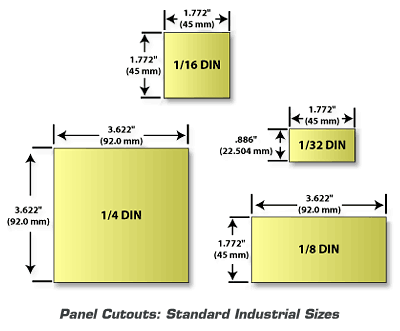
Standard Sizes
Since temperature controllers are generally mounted inside an instrument panel, the panel must be cut to accommodate the temperature controller. In order to provide interchangeability between temperature controllers, most temperature controllers are designed to standard DIN sizes. The most common DIN sizes are shown below.
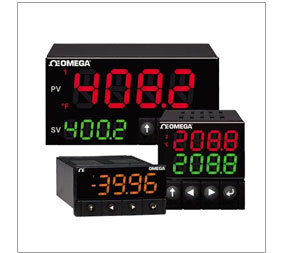

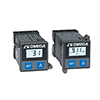 On-Off Controllers
On-Off Controllers
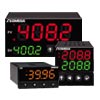 Autotune PID Controllers
Autotune PID Controllers
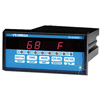 Multiloop Controllers
Multiloop Controllers
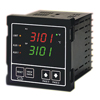 Safety Limit Controllers
Safety Limit Controllers
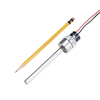 Temperature Switches
Temperature Switches

 Controlador de Temperatura
Controlador de Temperatura
 Contrôleurs de Température
Contrôleurs de Température
 Reguladores de Temperatura
Reguladores de Temperatura
 Reguladores de Temperatura
Reguladores de Temperatura
 Temperature Controllers
Temperature Controllers
 Temperaturcontrollere
Temperaturcontrollere
 Régulateurs de Température
Régulateurs de Température
 Temperaturreglern
Temperaturreglern
 Regolatori di Temperatura
Regolatori di Temperatura
 Temperature Controllers
Temperature Controllers
 Controladores de Temperatura
Controladores de Temperatura
 Temperature Controllers
Temperature Controllers
 Temperature Controllers
Temperature Controllers
 温度过程控制器
温度过程控制器
 Temperature Controllers
Temperature Controllers
 温度コントローラー
温度コントローラー
 온도 컨트롤러
온도 컨트롤러
 Temperature Controllers
Temperature Controllers
 Temperature Controllers
Temperature Controllers
 Temperature Controllers
Temperature Controllers
 Temperature Controllers
Temperature Controllers
 Temperature Controllers
Temperature Controllers